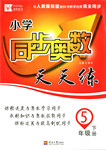题目内容
D
Stonehenge(巨石阵)may have been a prehistoric health center rather than a site for observing stars or a temple in honor of the dead, scientists said yesterday. New evidence unearthed at the World Heritage Site in more than 40 years suggests that the monument was a place where the diseased and injured went in groups, seeking cures.
After a two-week dig, scientists have concluded that Stonehenge was “the ancient healthcare centre of southern England” because of the existence of “bluestones”---the smaller columns of dolerite(辉绿岩)that formed an earlier stone structure.
By dating pieces of remains to around 7330BC, Tim Darvill, of Bournemouth University, and Goff Wainwright, of the Society of Amtiquaries have found that hunter-gatherers were at the site on Salisbury Plain 4,000 years earlier than thought. The first stage of Stonehenge, a round earthwork structure, was built around 3000BC. Professor Wainwright added: “I did not expect the degree of complexity we discovered. We’re able to say so much more about when Stonehenge was built and why---all of which changes our previous understanding of the monument.”
The research reveals the importance of the henge’s famous bluestones. Hundreds of bluestone chips gathered at the site have led the team to conclude that the bluestones were valued for their curing effects---the key reason that about 80 of them, each weighing up to 4 tons and a half, were dragged more than 150 miles from the Preseli Hills to Wiltshire. After years of research, Professors Darvill and Wainwright have concluded that, for thousands of years, the Preseli mountain range was home to magical health centers and holy wells.
Even today there are those who believe in the curing powers of the springs for coughs and heart disease, and people who use crystals and bluestones for self-curing. Radiocarbon tests have also revealed that the construction of the original bluestone circle took place around 2300BC, three centuries later than originally thought. Interestingly, on the same day died the “Amesbury Archer”---a sick traveler from the Swiss or German Alps who had an infected knee---whose remains were discovered about five miles from Stonehenge. The professors believe that he was a devoted religious person who was hoping to benefit from the curing powers of the monument.
63.Stonehenge is recently believed to be a place for people .
A.to recover from poor health B.to observe star movements
C.to hold religious ceremonies D.to gather huge bluestones
64.What can be inferred about Stonehenge from the passage?
A.The springs could cure coughs and heart disease best.
B.The new discovery was the same as what had been expected.
C.Some huge bluestones were not produced at Stonehenge.
D.The original bluestone circle was thought to be constructed around 2000BC.
65.The sick traveler in the passage is supposed to be .
A.a devoted religious person from Stonehenge
B.one of the earliest discoverers of Stonehenge
C.the first explorer to test the magical power of bluestones
D.a patient trying to cure his infection at Stonehenge
66.Which of the following might be the best title for the passage?
A.Stonehenge: A New Place of Interest B.Stonehenge: Still Making News
C.Stonehenge: Heaven for Adventurers D.Stonehenge: Still Curing Patients
63---66 ACDB

 同步奥数系列答案
同步奥数系列答案书面表达 (满分25分)
假如你是李华,最近,你班同学就中学生是否可以带手机上学进行了讨论。 请你根据下列信息,给校长写一封信,客观地介绍你班讨论的情况![]()
| 70%的学生认为 | 30%的学生认为 |
| 1. 没有必要带手机。 2.带手机会分散学习精力,上课开机影响极坏。 3. 学生用手机会增加家长经济负担。 | 1.学生可以带手机上学,但上课要关机。 2.学生带手机可以方便联系。 3.信息时代的交流工具,不应禁止 |
1.词数:100字左右
2.经济负担economic burdens.
3.信的开头已经为你写好
Dear principle,
I’m writing to tell you about the discussion we’ve had about whether a mobile phone should be brought to school.